Acclaimed artist created characters that pull at the heartstrings while allowing viewers to use their minds to fill in the blanks, Lin Qi reports.
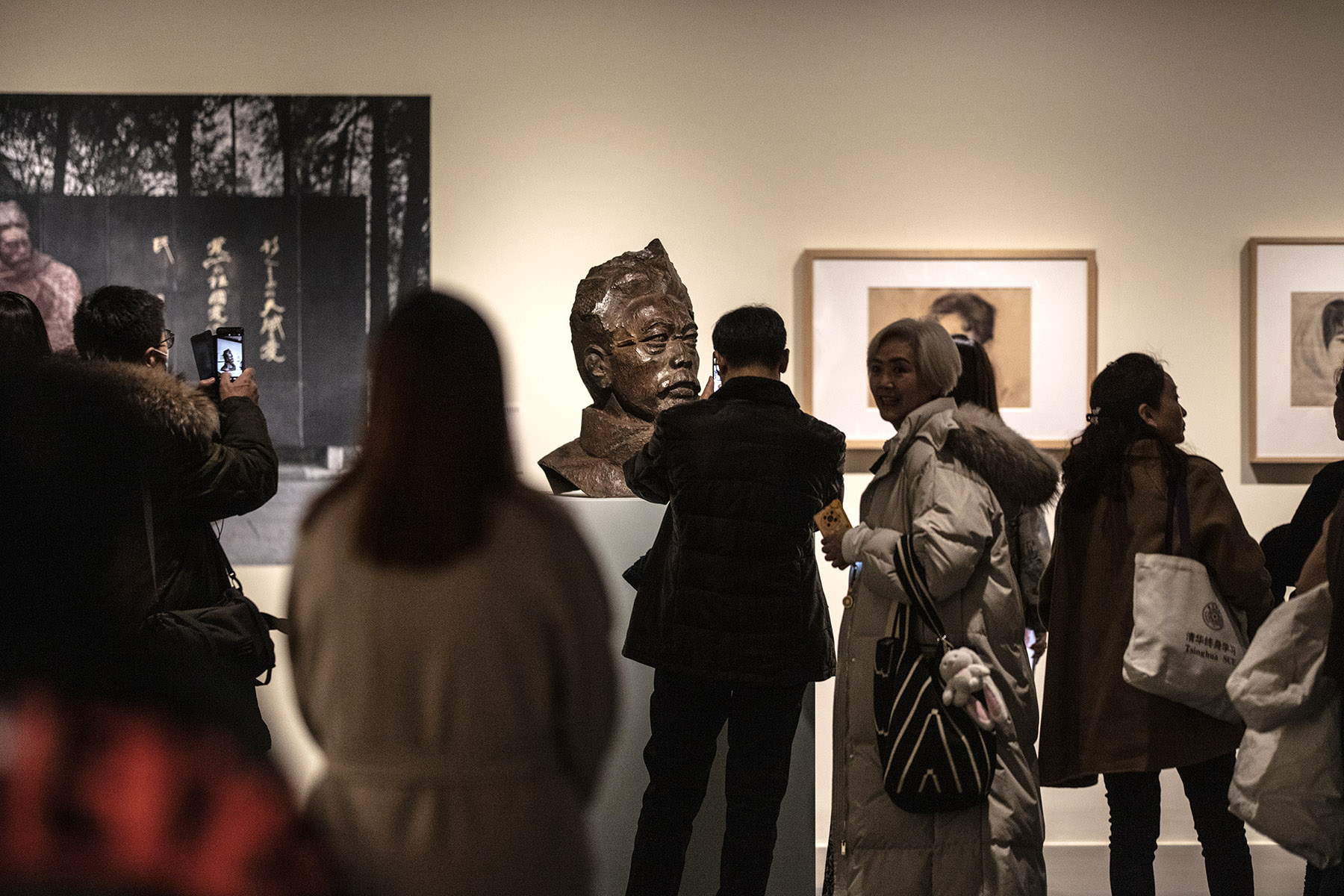
For many years, Qian Shaowu (1928-2021) remembered often hearing the sounds of the erhu — a Chinese two-stringed fiddle — by A Bing, a neighbor with bad eyesight, almost every night during his childhood.
In the tumultuous 1930s, A Bing, whose birth name was Hua Yanjun, made a living as a street musician in Wuxi, Jiangsu province, where Qian was born and raised in an intellectual family.
A Bing's eye disease deteriorated over time and eventually, he lost his sight completely.
READ MORE: A century of exhibits
In the following decades, he continued to play the erhu on the street until one day his music caught the attention of a musicologist from Shanghai who recorded several tunes played by A Bing.
A Bing died shortly after and one of his pieces, Er Quan Ying Yue (The Moon Reflected in the Second Spring) became a household classic. The strong mournfulness of the notes pulls at the listeners' heartstrings, including Qian, who grew into a sculptor and art professor of repute in Beijing.
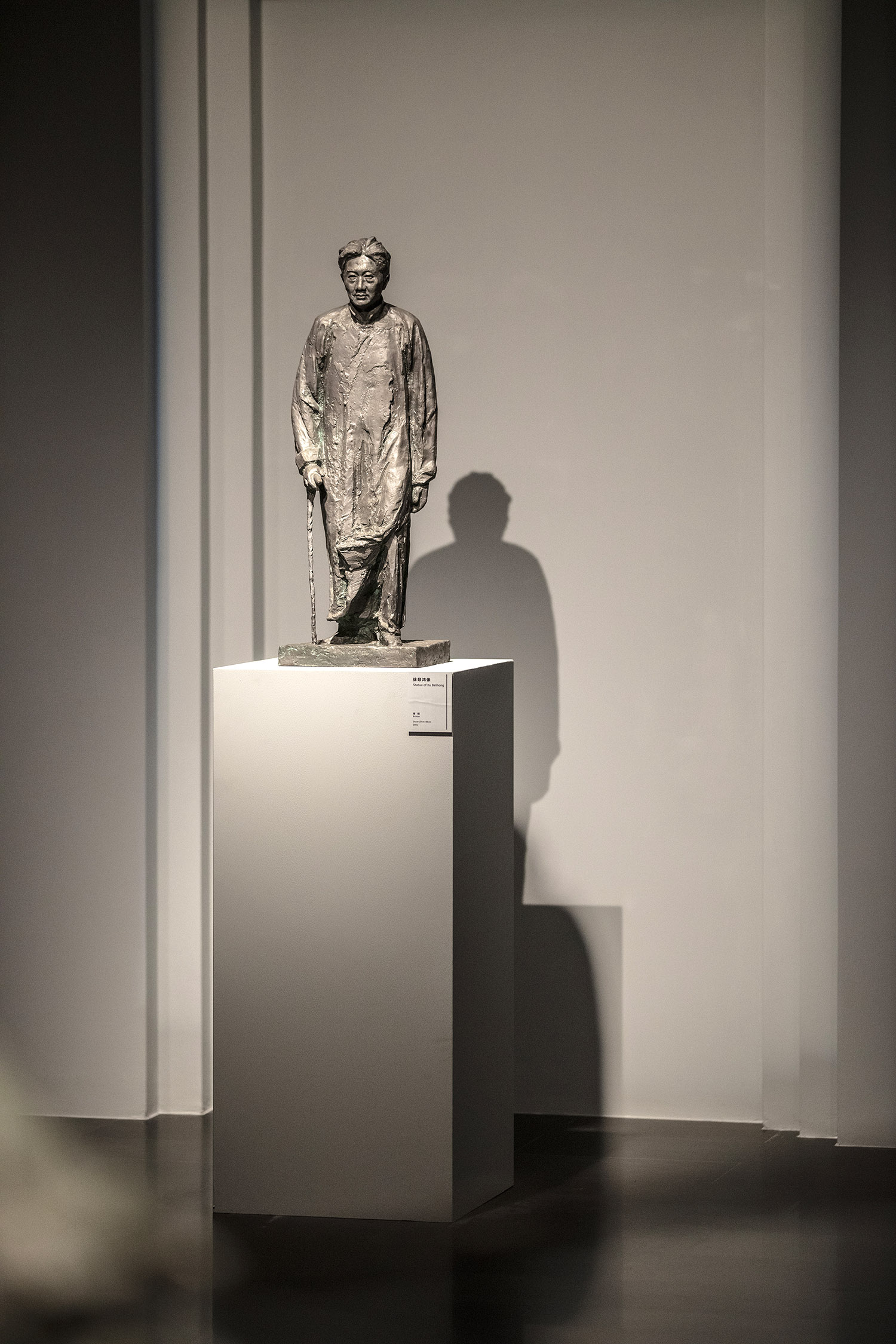
When Qian created a bronze statue of A Bing in 1999, he recalled the fading images of this acquaintance from childhood.
The final work shows a side profile of a raggedly dressed A Bing who bends and leans against a wall with his hand for support. It renders emotions of misery and desolation to the figure who suffered many life toils. Meanwhile, his struggling body hints at a depressed soul, though his spirit refuses to surrender to the adversaries of fate.
The work titled Standing Statue of A Bing orchestrates a sculptural symphony to visualize the sorrowful, penetrating melodies A Bing played. It is now on show at The Master's Touch on the Heartstrings, an exhibition of Qian's sculptures and drawings at the Tsinghua University Art Museum, running through May 5.
This standing A Bing is placed next to Sitting Statue of A Bing, another work of the musician that Qian created in 2004.
In the piece, Qian delineated his former neighbor in a more relaxing state: With a lowered head, A Bing is deep in his performance, and his thin stretched-out right arm pulls the erhu bow to its limit.
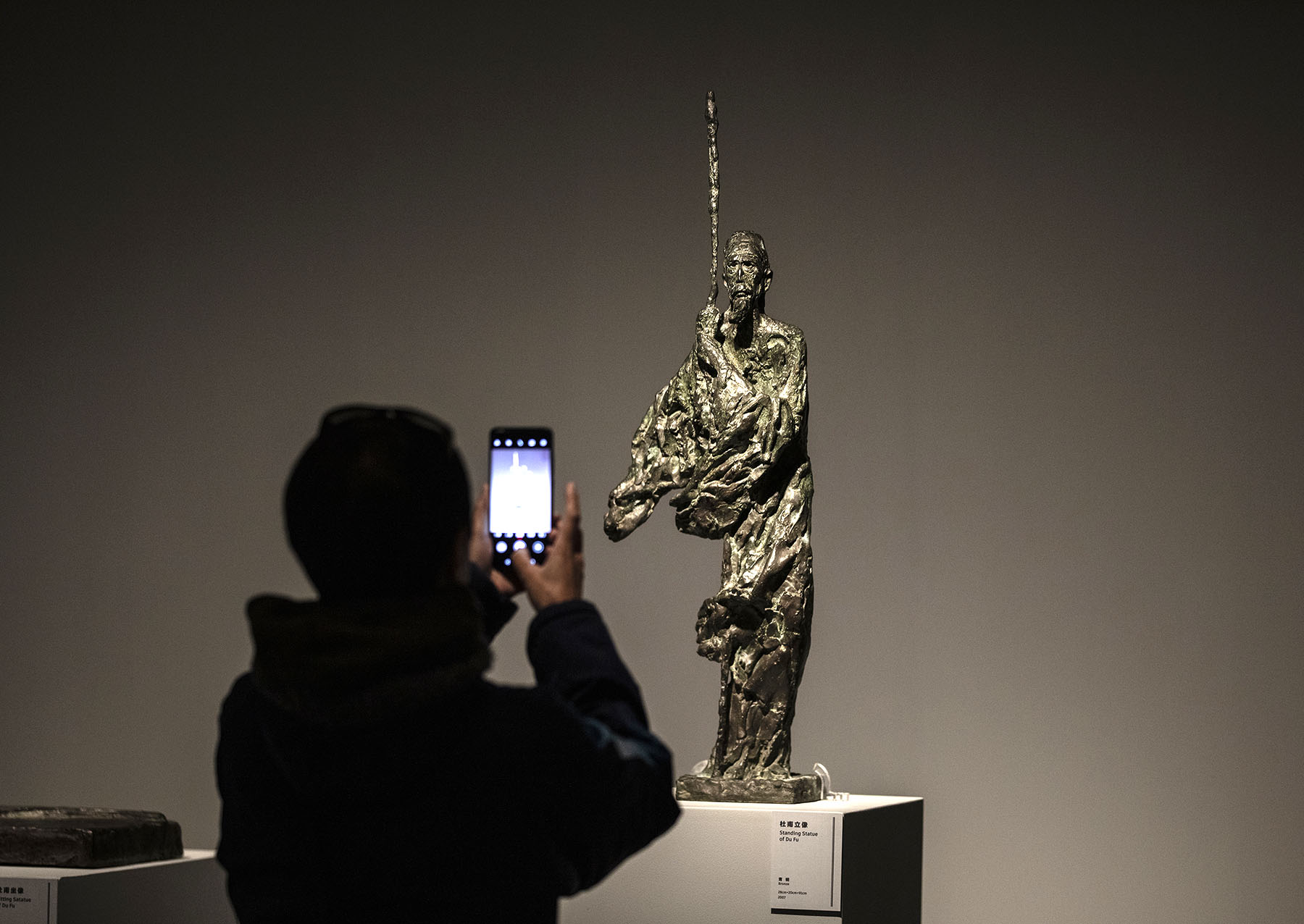
Yin Shuangxi, the exhibition's curator and a professor at the Central Academy of Fine Arts, says Qian is a representative of first-generation sculptors after the founding of the People's Republic of China who blended European and Chinese artistic traditions.
After Qian enrolled in the Central Academy of Fine Arts in the late 1940s, he was tutored by Wang Linyi, a sculptor of note who studied and lived in France for years and was trained with the academic principles of classical European art.
Qian studied another six years at the I.E. Repin St. Petersburg State Academic Institute of Painting, Sculpture and Architecture in Russia from 1953 to 1959.
"Equipped with his experiences of studying sculpture, Qian ventured into the long-term research of the Chinese cultural tradition and aesthetic spirit, and presented that aspect in his work," Yin says.
Besides the two A Bing statues, the exhibition gathers many of Qian's signature works, which profile historical figures of luminosity, such as Du Fu, the eighth-century poet, and Li Qingzhao, a female poet living in the 11th and 12th centuries, to show his exploration of integrating the xieyi (drawing the spirit) method in sculpture.
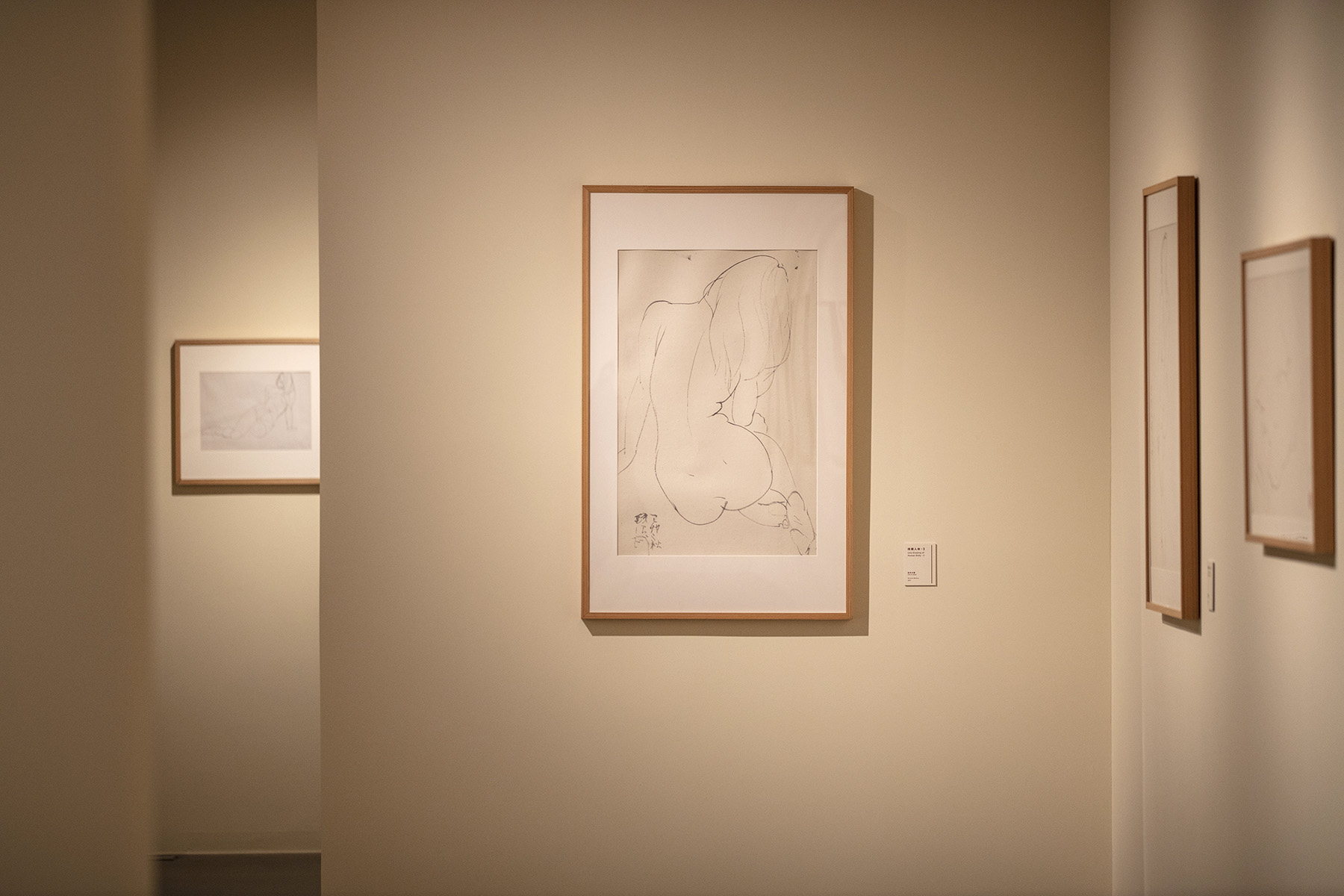
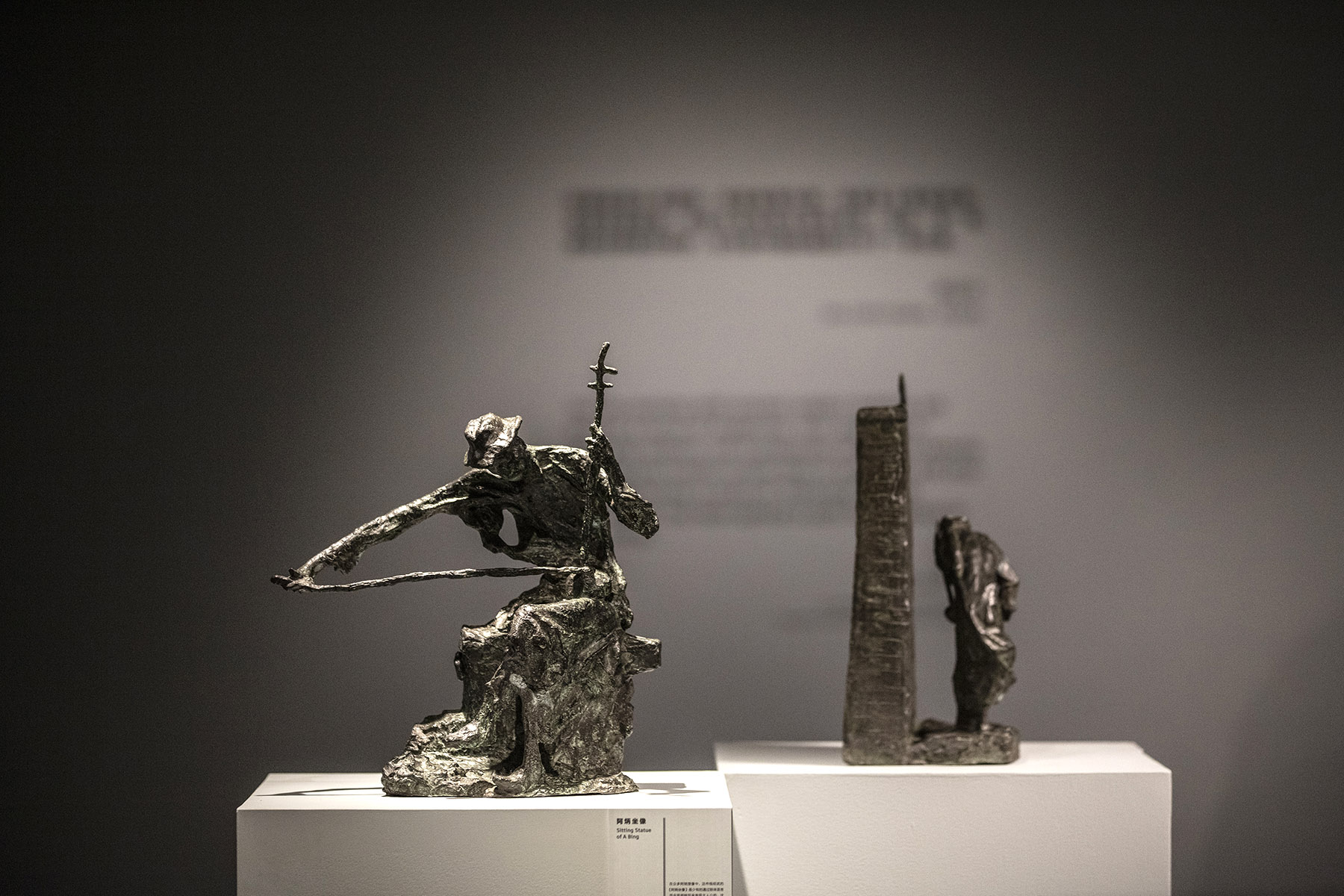
The xieyi manner of classical Chinese painting employs loose strokes and expanses of colors to exhibit a poetic, sometimes aloof, sensation.
When Qian sculpted, he blended the xieyi approach with reduced details to contour his subjects in a minimalist mood.
"He was also inspired by the semiabstract tendency of Chinese calligraphy," Yin says. "His treatment of human bodies was not to focus on the accuracy of details but the beauty of form and the mood he created by which he wanted to reveal the inner world of his subjects, their demeanors and temperaments, and the specific historical and cultural contexts they lived in."
Qian once said, "For artists, it is one of their missions to study the human body, to show it and the vitality of life".
His experiment presenting a summarized beauty is also vivid in the hundreds of nude drawings he made with ink and Chinese brushes. They were among his donation of nearly 1,000 of his works to Tsinghua University years ago.
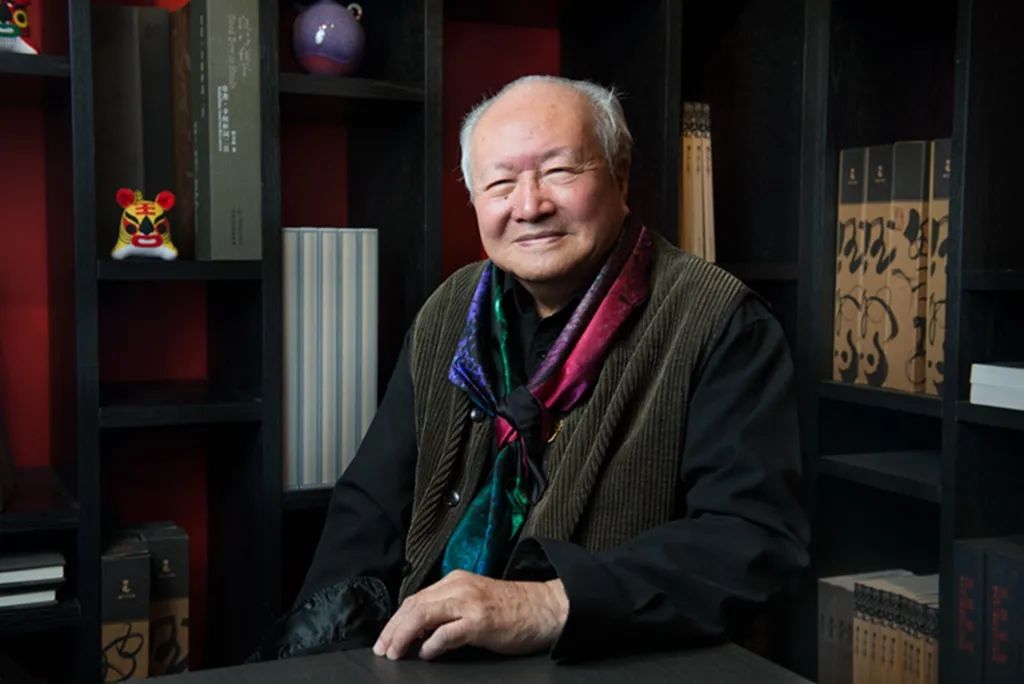
Qian took a professorship position at the Academy of Arts and Design of Tsinghua University in 2008.
Dozens of these nude drawings are on show to unveil a lesser-known aspect of his work if compared to his sculptures, some of which were commissions for display at public venues.
ALSO READ: Memories of a master
Qian said: "The fewer strokes, when necessary, the more space is left for people to imagine.
"Letting people imagine would make what is defined and determined become infinite and boundless. How marvelous it is."
Contact the writer at linqi@chinadaily.com.cn


